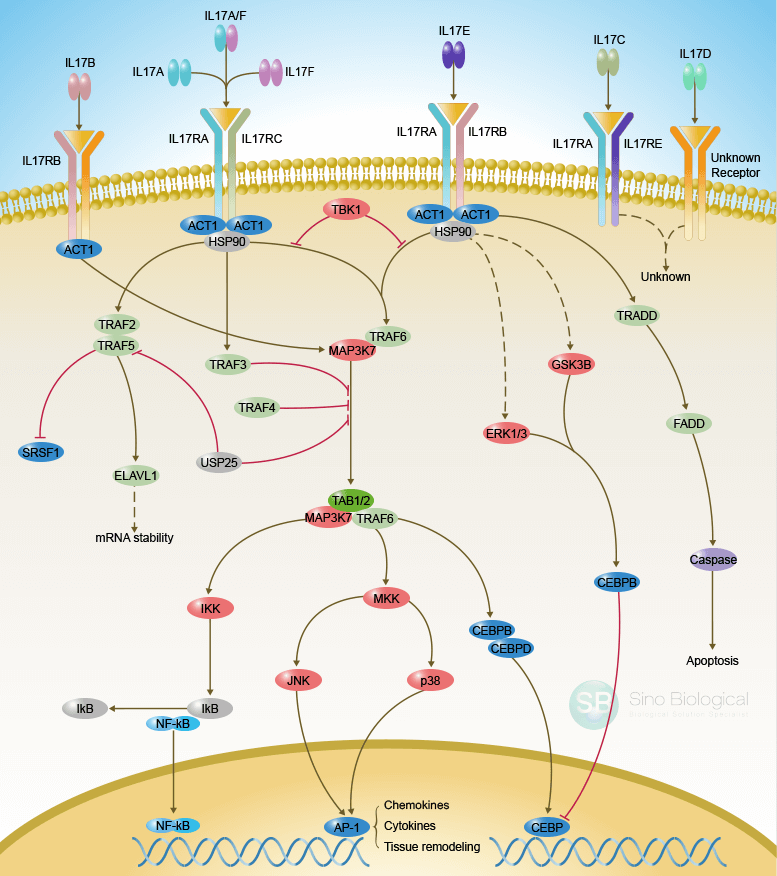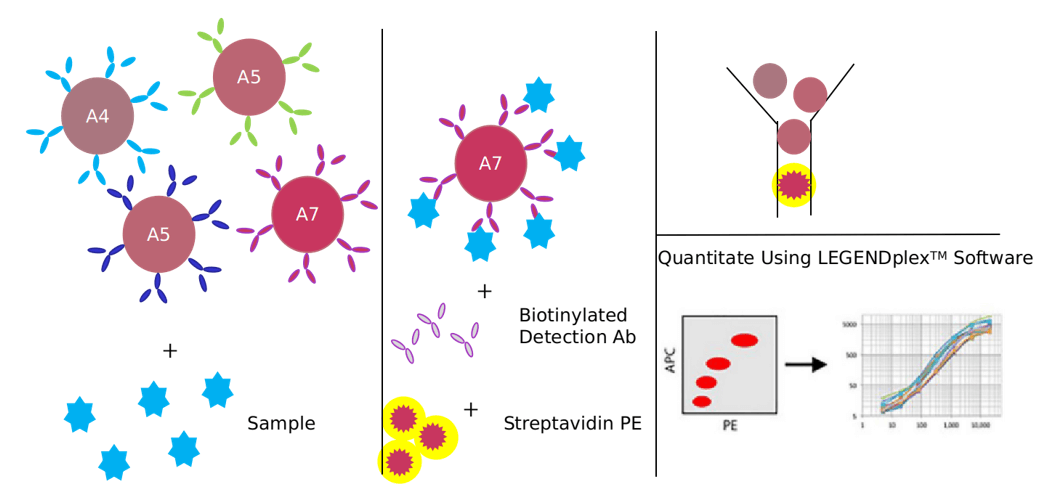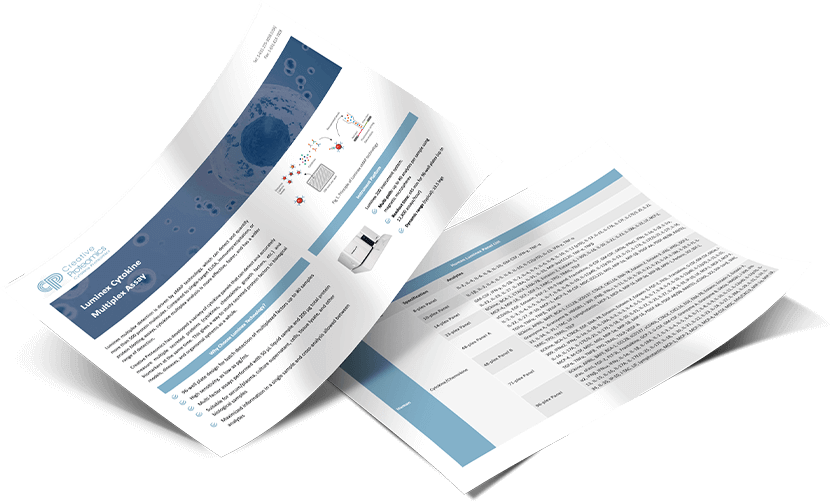IL-17 signaling pathway
Based on Luminex technology platform, Creative Proteomics provides analysis services for key targets of IL-17 signaling pathway.
IL-17 is the main effector produced by Th17 cells and is essential for processes including host defense, tissue repair, pathogenesis of inflammatory diseases, and cancer progression. IL-17 can induce a variety of cells to release pro-inflammatory factors and neutrophil chemokines to adjust local tissue inflammation, and play an important role in the immune regulatory network. It has been proven to be related to asthma, tuberculosis, lung cancer and coronary arteries. Many diseases are related. The innate immune cells that produce IL-17 mainly include lymphoid tissue induced cells, natural killer cells, CD3+ stable natural killer T cells, γδT cells and myeloid cells. In addition, mast cells and neutrophils can also produce IL-17.
IL-17 is a family of cytokines that acts as potent mediators in delayed-type reactions by increasing chemokine production in various tissues to recruit monocytes and neutrophils to the site of inflammation, similar to Interferon gamma. IL-17 is produced by T-helper cells and is induced by IL-23 which results in destructive tissue damage in delayed-type reactions. Interleukin 17 as a family functions as proinflammatory cytokines that responds to the invasion of the immune system by extracellular pathogens. Interleukin 17 acts synergistically with tumor necrosis factor and interleukin-1.
So far, the IL-17 family has 6 members: IL-17A to IL-17F. IL-17A is the prototype of the IL-17 family. IL-17F has 50% homology with IL-17A, while the homology between IL-17B~E and IL-17A is only 16%~30%. On different chromosomes. Members of the IL-17 family mainly function in the form of homodimers or heterodimers.

IL-17 can activate downstream signaling pathways shared by other cytokines, including NF-κB, mitogen-activated protein kinase, c-Jun N-terminal kinase, CCAAT/enhancer binding protein, phosphoinositide 3-kinase, p38 and cellular External signal-regulated kinases and so on. At the same time, it plays an important regulatory role in the stability of mRNA.
Our detectable targets:
| ACT1 | TRAF2 | TRAF3 | TRAF4 | TRAF5 | TRAF6 |
| TBK1 | HSP90 | MAP3K7 | USP25 | ELAVL1 | IKK |
| IKB | JNK | AP-1 | TAB1 | TAB2 | ERK1 |
| ERK3 | GSK3B | TRADD | FADD | Caspase | CEBPB |
| MKK | NF-kB | CEBP | p38 | SRSF1 |
Technology platform
We provide Luminex technology for IL-17 signaling pathway analysis.
Luminex technology is a multifunctional liquid phase analysis platform developed on the basis of colored microspheres, laser technology, applied fluidics and high-speed digital signal processing technology. The core is to encode polypropylene microspheres or magnetic microspheres with fluorescent dyes. By adjusting the different ratios of the two fluorescent dyes, up to 100 microspheres with different fluorescence spectra can be obtained. Each kind of microspheres is covalently cross-linked. Capture antibodies against specific antigens.
IL-17 is the main effector produced by Th17 cells and is essential for processes including host defense, tissue repair, pathogenesis of inflammatory diseases, and cancer progression. In medicine, it is related to many diseases such as asthma, tuberculosis, lung cancer and coronary arteries.
In addition to Luminex Multiplex Assay, Enzyme-linked immunosorbent assay (ELISA), Flow cytometry (FACS analysis) technology can also be provided to meet other customer needs.
Advantages of IL-17 signaling pathway detection:
- Versatility: VEGF signaling pathway technology can be applied to a variety of biological tests, including immune analysis, genotyping, gene expression, enzyme analysis, etc. It can detect both protein and nucleic acid. In addition to clinical use, it can also be used in scientific research, CDC, blood stations, agricultural, biological and pharmaceutical professional laboratories
- High-throughput and high-speed: Each microsphere is used as a separate test body, which can perform a large number of biological tests at the same time. It only needs 10~201 samples to test up to 100 indicators at a time, and the fastest can reach 10,000 tests /hour

Application of our service:
- To study the effect of each virus on IL-17 signaling pathway
- To study the regulation mechanism of IL-17 signal pathway in disease
- To study the effects of drugs or therapies on IL-17 signaling pathways
Creative Proteomics has developed a signal pathway target detection platform. We are not limited to providing IL-17 signal path detection services, but can also provide other signal path detection services. If you want to detect other targets, please contact us and we will customize the service for you. Look forward to working with you.
References:
- Huppler AR, Bishu S, et al. Mucocutaneous candidiasis: the IL-17 pathway and implications for targeted immunotherapy. Arthritis Res Ther, 2012, 14(4): 217.
- Conti H, Peterson A, et al. Oral-resident 'natural' Th17 cells and γδ-T cells control opportunistic Candida albicans infections. J Exp Med, 2014, 211(10): 2075–2084.



